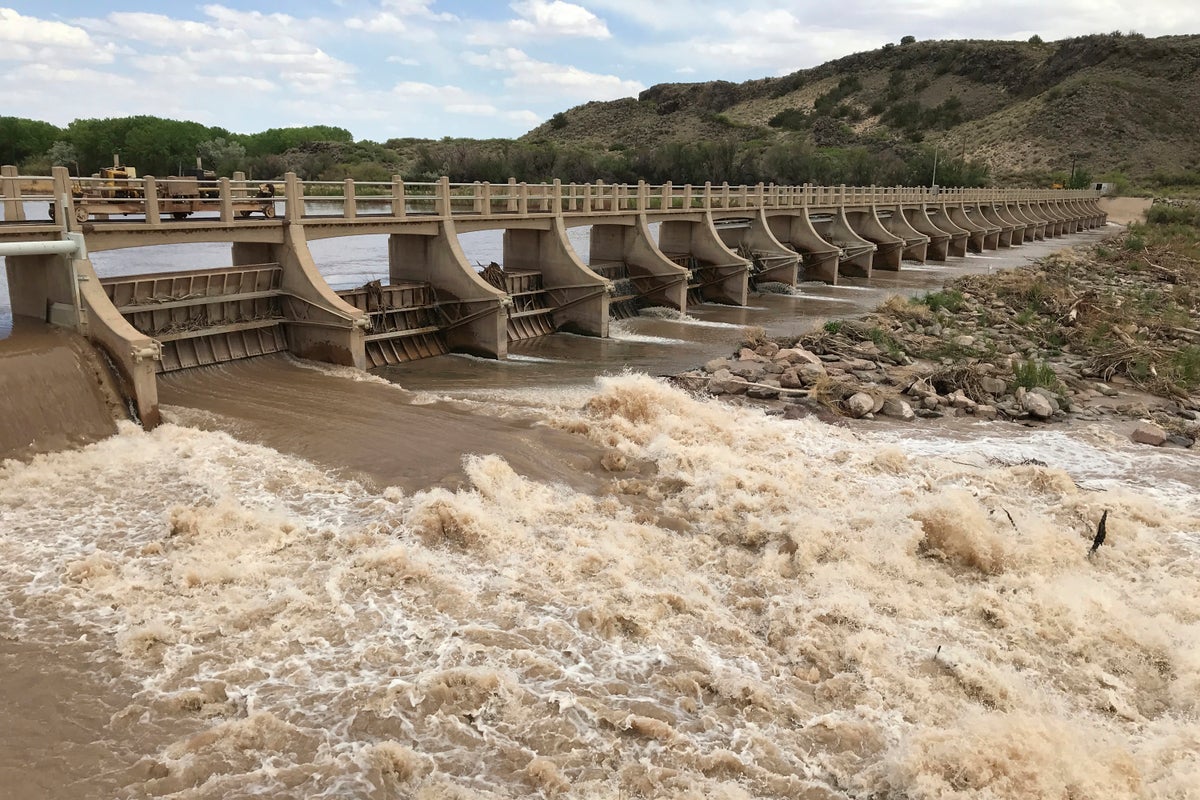
Some New Mexico lawmakers are warning that leaving farmland unplanted along one of North America’s longest rivers won’t be a long-term answer to ensuring Texas gets its share of the Rio Grande under a pending settlement that would end a yearslong fight over the river's management.
Members of the powerful Legislative Finance Committee met Tuesday in Las Cruces, not far from the border with Texas. On the agenda were briefings from top water managers about the history of the dispute and the creation of a task force that will be charged with developing a plan for implementing the proposed agreement.
“The work ahead in the lower Rio Grande is significant and we know that and we see that and we're prepared to take it on. We have a plan,” said Hannah Riseley-White, interim director of the Interstate Stream Commission.
That plan calls for reducing use through a combination of efforts that range from paying farmers not to pump groundwater to leasing surface water, fallowing farmland and making infrastructure improvements.
The proposed settlement reached last fall by New Mexico, Texas and Colorado still needs the approval of a judge who has been overseeing the case and ultimately the U.S. Supreme Court.
State Sen. Joseph Cervantes, a Democrat from Las Cruces, argued that the settlement was far from a done deal, while other lawmakers said the burden of meeting water delivery obligations should not fall just to farmers in southern New Mexico.
Some officials talked about fallowing land along the Rio Grande to reduce both diversions from the river and groundwater pumping that many farmers are forced to rely on in times of drought. In fact, it was pumping over the last two decades that prompted Texas to sue, arguing that the practice was cutting into the amount of water that was ultimately delivered as part of a decades-old water sharing compact between Colorado, New Mexico and Texas.
Others at the meeting said focusing on infrastructure would result in more efficient use of the river. They also said storm water runoff could be captured and managed to help recharge aquifers in southern New Mexico.
Proposals at two dams along the southern reaches of the river call for building secondary ponds where runoff could be held for later release so New Mexico would not lose out when storm surges send excess water beyond the state line.
“This infrastructure is absolutely necessary to adapt to this changing climate that we're in. It is necessary, but not sufficient,” said Phil King, an engineering consultant with Elephant Butte Irrigation District, the largest in New Mexico. “We're definitely going to have to change the way we administer our water.”
King noted that farmers along the lower Rio Grande are not pumping any more water than they did between the early 1950s and late 1970s, a period that serves as the baseline condition. However, municipal and industry use has increased 250% since then, he said.
Speaking to the fallowing efforts, King said: “Do you really want to go and slaughter the goose that lays the golden eggs, contributing to our economy and forming an important part of our culture? Or do you want to look at trying to use infrastructure first to minimize how much you have to reduce water use?”
Cervantes said that while the proposed settlement would end the dispute with Texas, it will create a battle between users in southern and northern New Mexico and that most farmers would not be willing to sell their land for the prices offered through the fallowing programs.
Democratic Sen. George Munoz, who chairs the Legislative Finance Committee, suggested money appropriated by the state Legislature as well as federal infrastructure funding would be better spent on infrastructure improvements along the river.
“We need to think about how we target the money we’re going to use in this next year to fix some of these problems,” he said. “But the Middle Rio Grande guys, my message to you is they’re coming for you next. You better get ready because there’s not enough water down south.”







